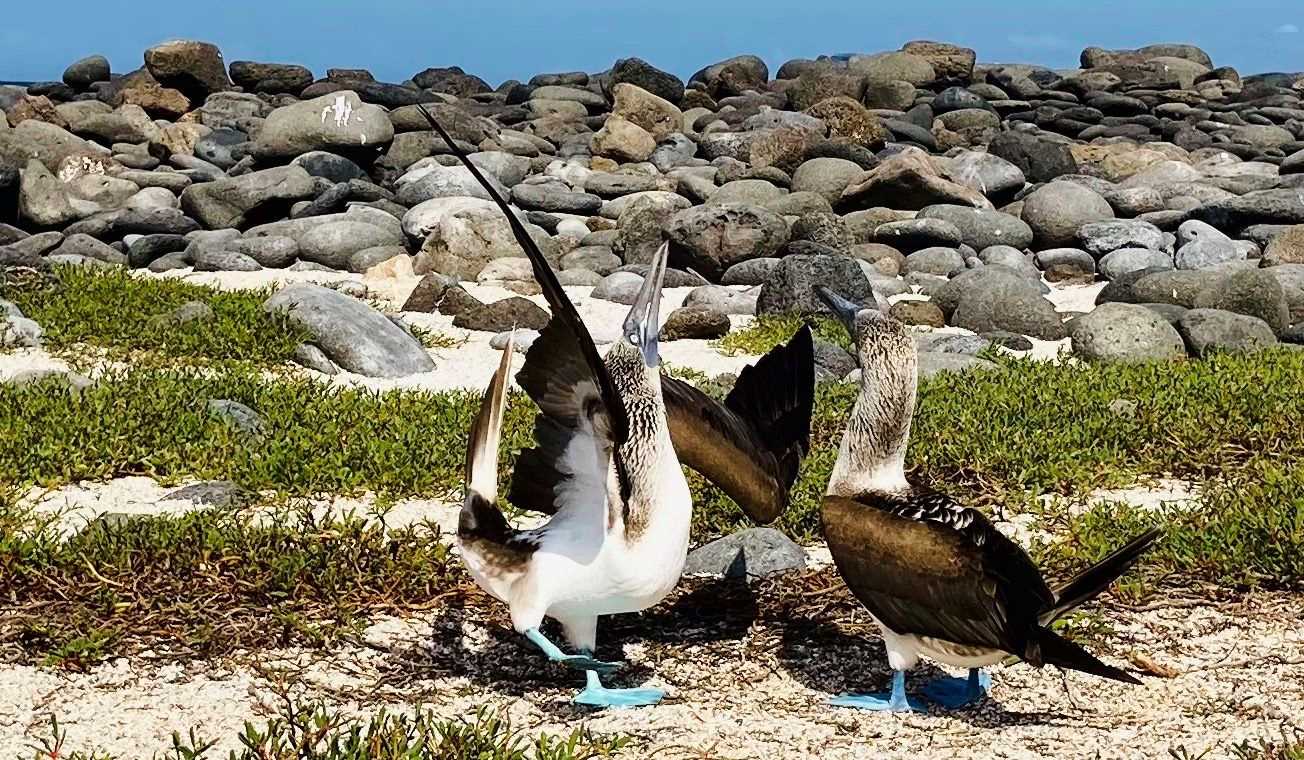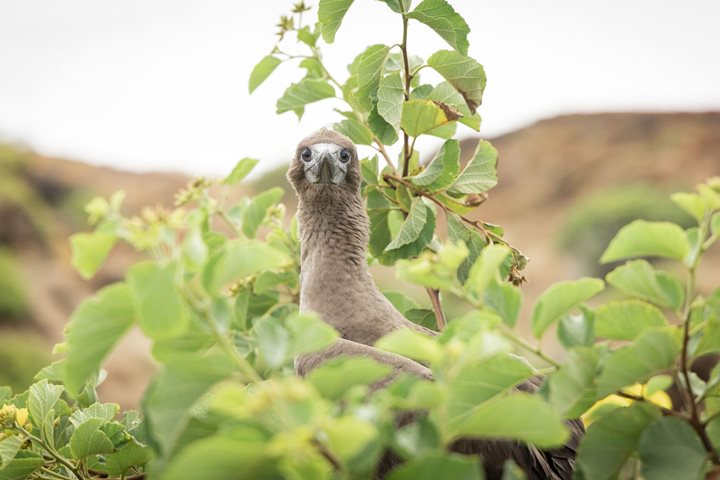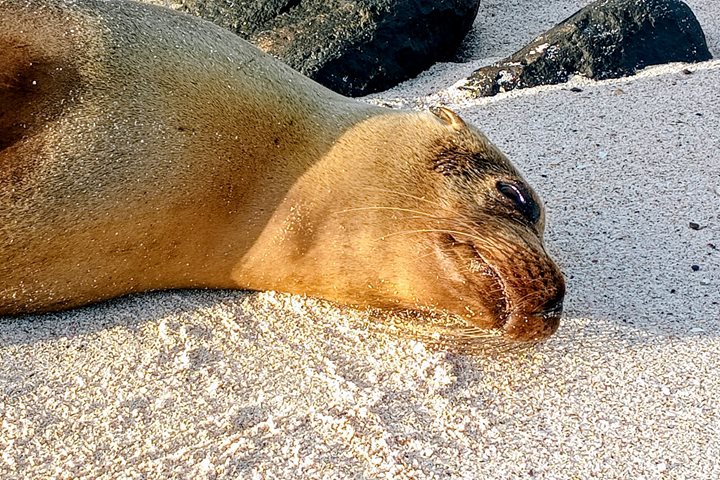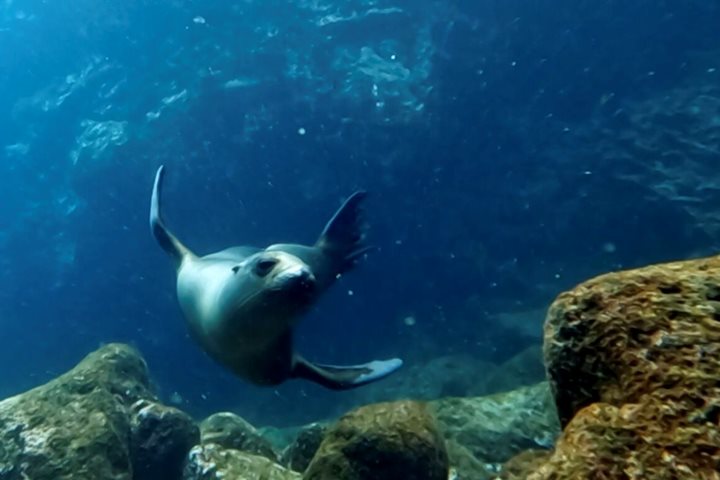Early in the morning, National Geographic Islander anchored near the coast of the small North Seymour Island. This visiting site is flat with a rocky trail, arid zone shrubs, Opunthia cactaes, and palo santo trees. It is the perfect environment for both species of frigatebirds, magnificent frigates and great frigates. Today we observed male frigates displaying their red pouches to attract the attention of females.
We found a couple of blue-footed boobies nesting and displaying the “booby dance” on the ground. The male shows his beautiful blue feet to the female.
We could not miss the Galapagos land iguana. They rested, remaining still, to heat up their bodies, or they searched for their favorite food: cactus pads.
In the afternoon, we enjoyed some beach time at Rabida Island with its red colored sand, due to the presence of iron. We snorkeled along the rocky coast or walked on the beach surrounded by sea lions at the end of the afternoon. With the sunset before us, it was the perfect way to end the day.







